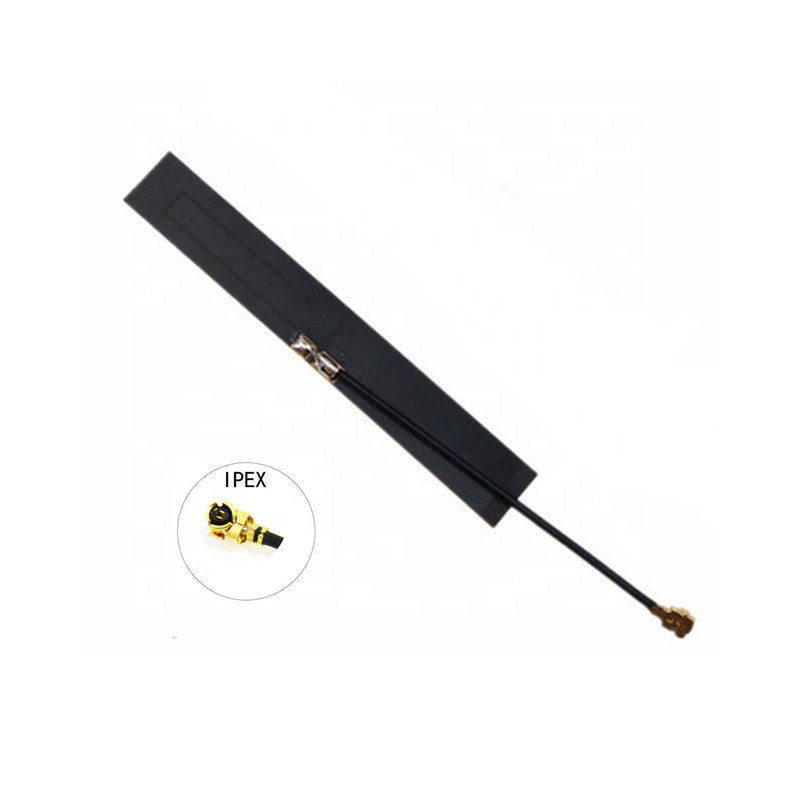Introduction
The evolution of wireless technology continues to drive demand for increasingly compact yet high-performance antenna solutions. The IPEX-connected planar antenna shown in these images represents the cutting edge in modern RF design, offering robust connectivity in an ultra-compact form factor. These antennas are specifically engineered to meet the space constraints of today's IoT devices, wearable technology, and compact communication equipment while maintaining excellent RF performance across multiple frequency bands.
Technical Specifications and Design Features
This rectangular planar antenna demonstrates several advanced design characteristics. The black PCB-based construction provides a low-profile solution typically measuring 1-3mm in thickness, making it ideal for space-constrained applications. The integrated IPEX connector (also known as U.FL or IPX) offers a reliable and compact interconnection solution rated for 20+ mating cycles. The antenna operates across key frequency bands including 2.4GHz WiFi, 5GHz WiFi, and 4G LTE bands, with some variants supporting 5G sub-6GHz frequencies.
The radiation pattern is intentionally omnidirectional, providing consistent coverage in all orientations. With a typical gain of 2-4 dBi and VSWR under 2.0 across operating bands, this antenna design maintains efficiency ratings of 60-80% despite its compact size. The materials used include high-quality FR-4 substrate with copper tracing and protective solder mask, ensuring durability in various environmental conditions.
Manufacturing and Quality Assurance
Production of these antennas involves precision manufacturing processes. Automated PCB fabrication ensures consistent trace geometry and impedance control, while robotic assembly guarantees proper connector attachment and mechanical stability.
Applications and Integration
This antenna design finds application across numerous industries. IoT devices benefit from its compact form factor for smart home sensors and industrial monitoring equipment. Wearable technology incorporates these antennas in fitness trackers and smart watches where space is at a premium. Telecommunications equipment uses them as secondary antennas in routers and modems, while automotive applications include telematics systems and in-vehicle connectivity.
Installation requires careful consideration of placement and grounding. The antenna performs best when mounted on non-metallic surfaces with adequate clearance from other components. The IPEX connector requires proper strain relief to ensure long-term reliability, while the adhesive backing provides secure mounting without additional hardware.
Performance Advantages
Compared to traditional antenna solutions, this design offers several distinct advantages. The planar structure allows for easy integration into product housings without protruding elements. The IPEX connector system enables flexible positioning and simplifies manufacturing assembly. The design's consistency ensures predictable performance across production runs, while the materials provide good temperature stability and environmental resistance.
Market Position and Availability
These antennas are widely available through electronic component distributors and antenna specialists. Pricing typically ranges from $2-8 per unit in production quantities, with custom variations available for specific requirements. Lead times generally range from 2-6 weeks for standard configurations, with rapid prototyping options available for development purposes.
Conclusion
The IPEX-connected planar antenna represents an optimal solution for modern wireless connectivity needs. Its combination of compact dimensions, reliable performance, and ease of integration makes it an ideal choice for product designers seeking to add wireless capabilities without compromising on space or aesthetics. As wireless technology continues to advance, these antennas will play a crucial role in enabling the next generation of connected devices.


